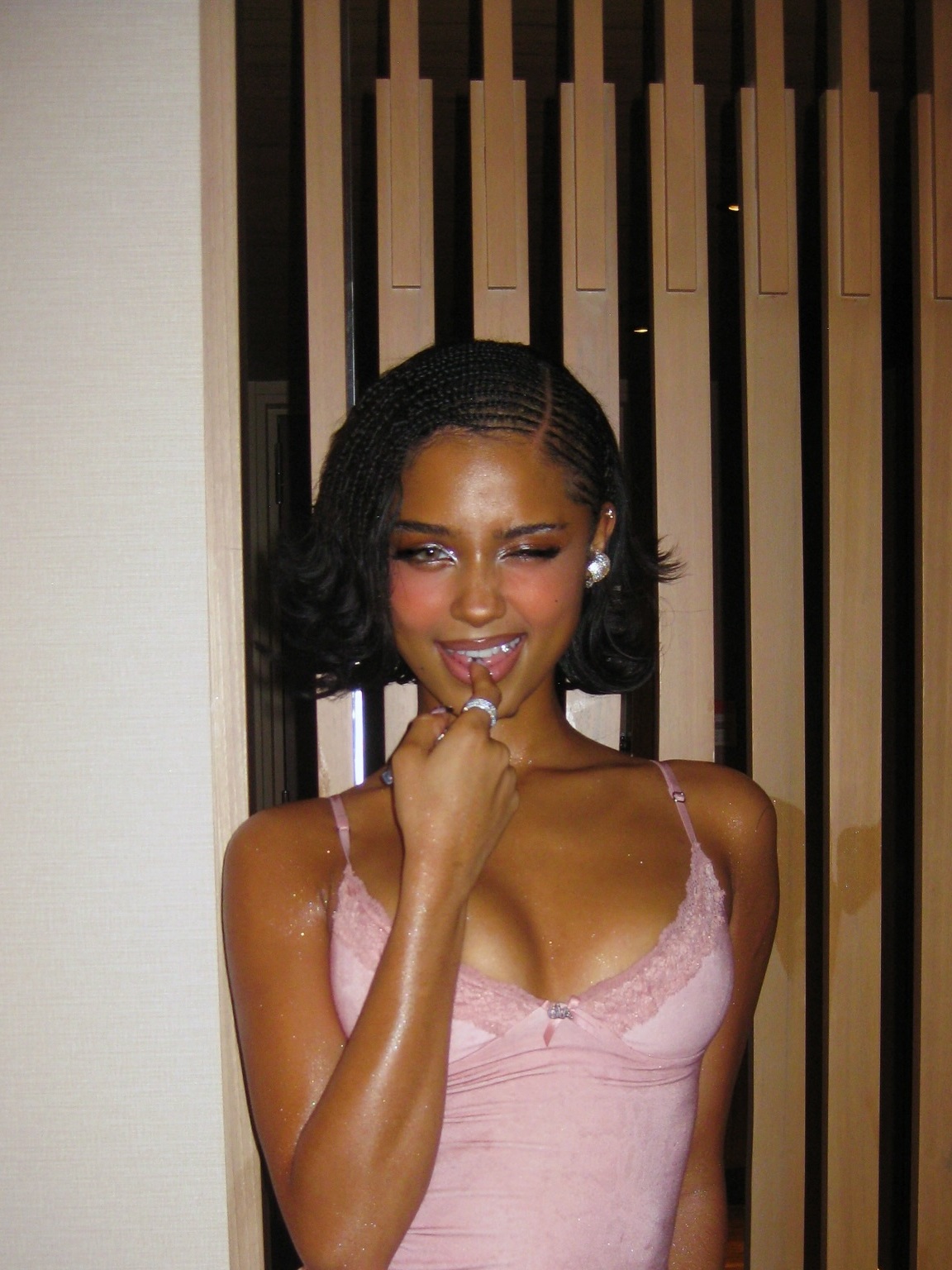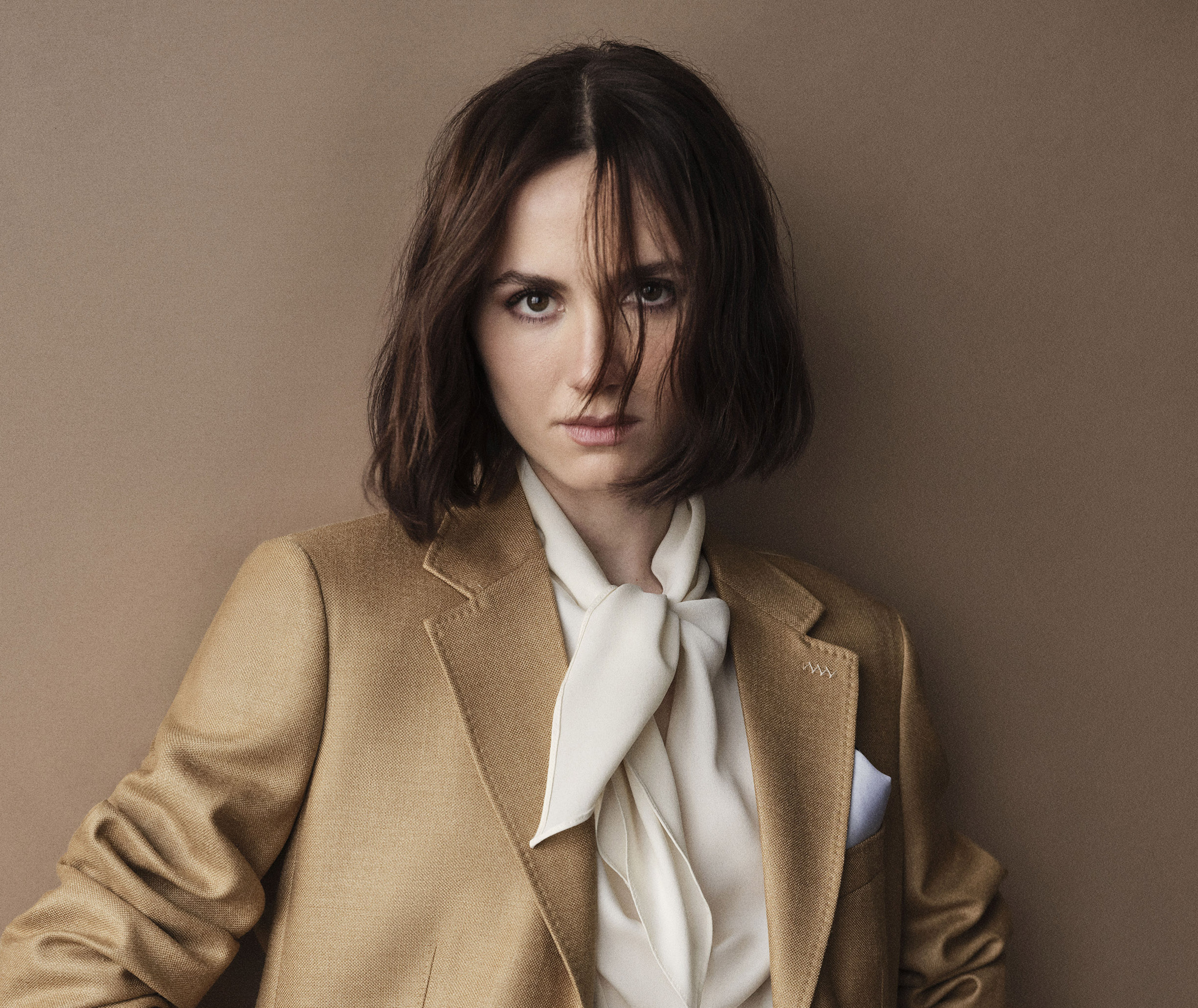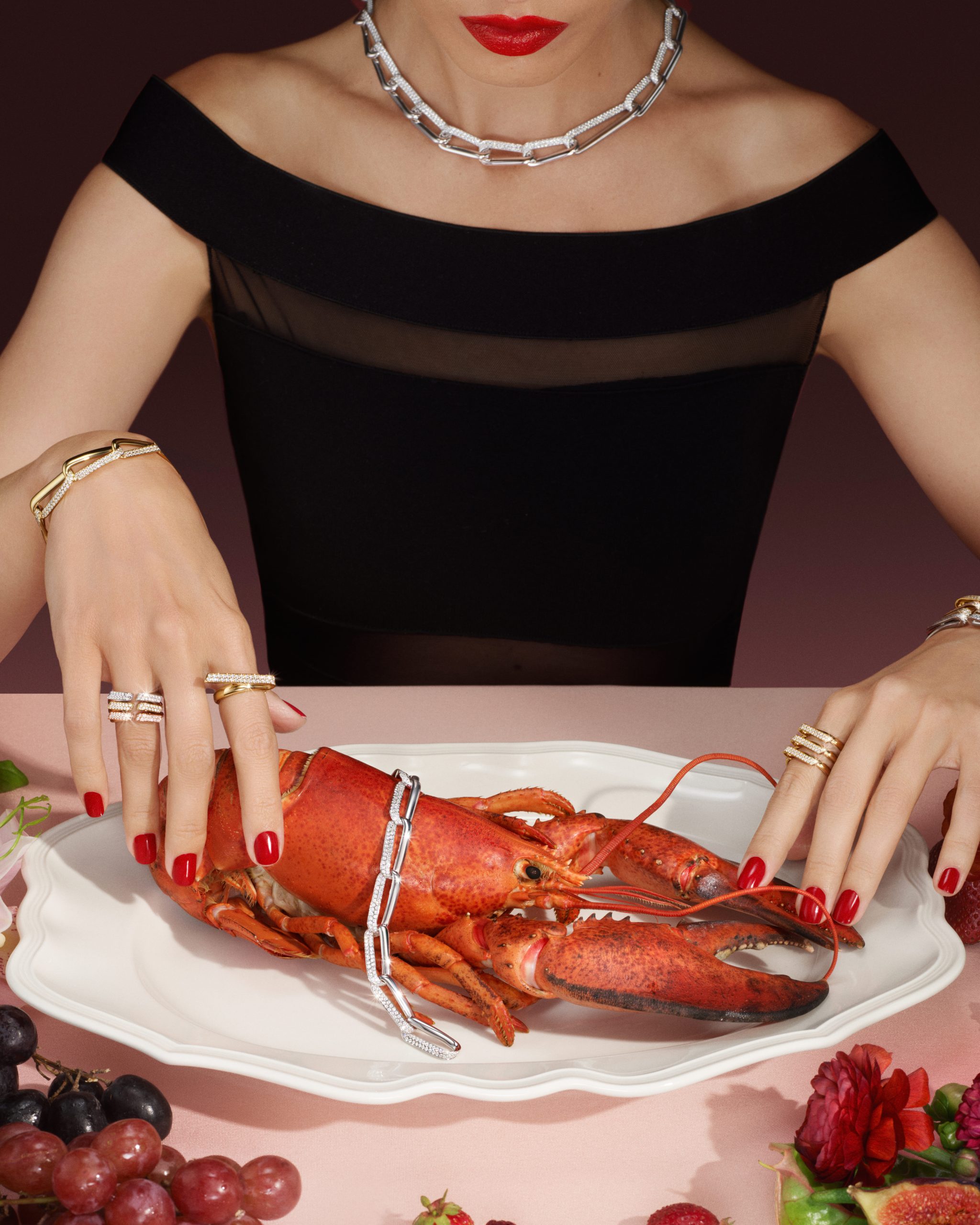Simon Le Bon has a cold. But the Duran Duran lead singer will not let it prevent him from giving interviews. It’s Monday morning at Blakes Hotel in London and Simon is preparing for a shoot with his supermodel wife of 30 years, Yasmin Le Bon.
A self-styled “consummate unprofessional”, Simon is in playful spirits. He jokes with the crew as they show him the wardrobe options, and his eyes seek out Yasmin’s whenever she enters the room. At 51, Yasmin Le Bon emanates the type of relaxed beauty that cannot be found in a jar or syringe. Her hair is shampoo-commercial bouncy. Her laugh is warm and throaty. There is an easy intimacy between the couple, whether it’s in the casual conversations about domestic matters (“Did you feed the woofs?”), or the cheeky bum-pinches in between takes.
They met in 1984, when Yasmin was modelling in London. Simon saw Yasmin’s face in a magazine, fell in love, and tracked her down through mutual contacts. The following year, the pair married in Yasmin’s home town, Oxford.
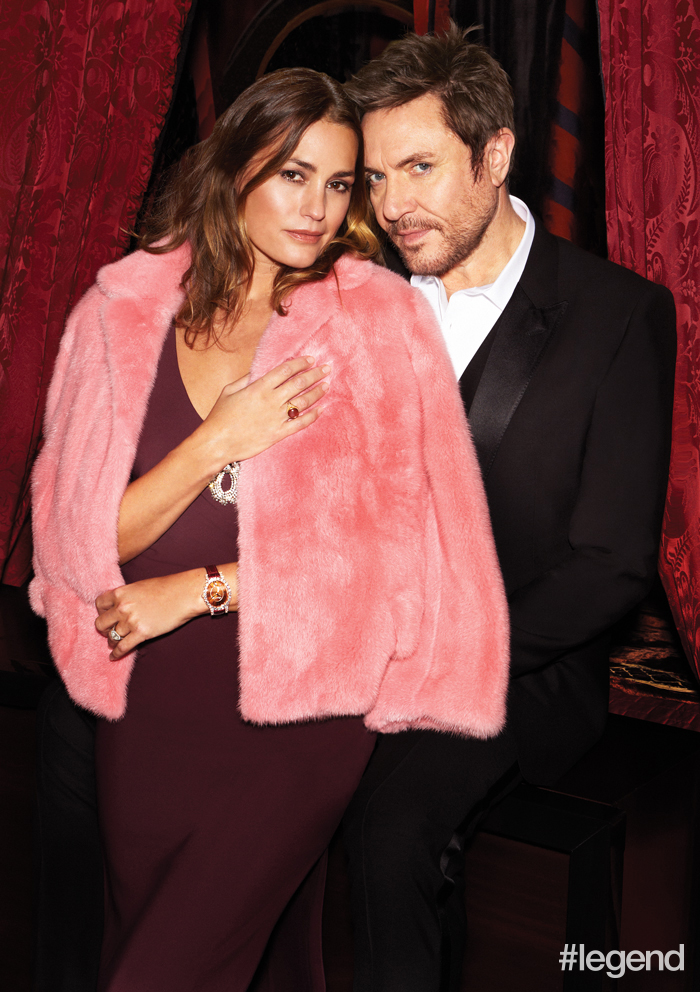
As one of the highest-earning models of the 1980s, Yasmin has graced the covers of countless fashion magazines, including Vogue, Elle, and Harper’s Bazaar. She continues to work with top fashion houses and is one of the new faces of Giorgio Armani, along with fellow supers Eva Herzigová, Nadja Auermann and Stella Tennant. Last year, Yasmin penned the foreword to A Journey in Style, a book of photographs published by London Heathrow Airport to celebrate travel through the ages. This year she will collaborate with Winser London, a womenswear brand, on a small collection for autumn/winter 2016.
In his Punk Masters T-shirt and studded leather shoes, Simon demonstrates a dress sense that belies his 57 years – although the trusty eyeliner of the New Romantic movement has long been abandoned. When Le Bon joined Duran Duran in 1980, it was only on trial for the summer. Such was the success of the combination that the band had a record deal with EMI Records by the end of that year. Duran Duran have since sold more than 70 million records worldwide and received many awards.
The Le Bons have three daughters: Amber, 26, Saffron, 24, and Tallullah, 21. “It’s a very full household,” says Yasmin. There’s also a Pug, one Chihuahua and two cats. However, it’s set to become a little less crowded when Simon hits the road on a world tour to promote the latest Duran Duran album, Paper Gods.
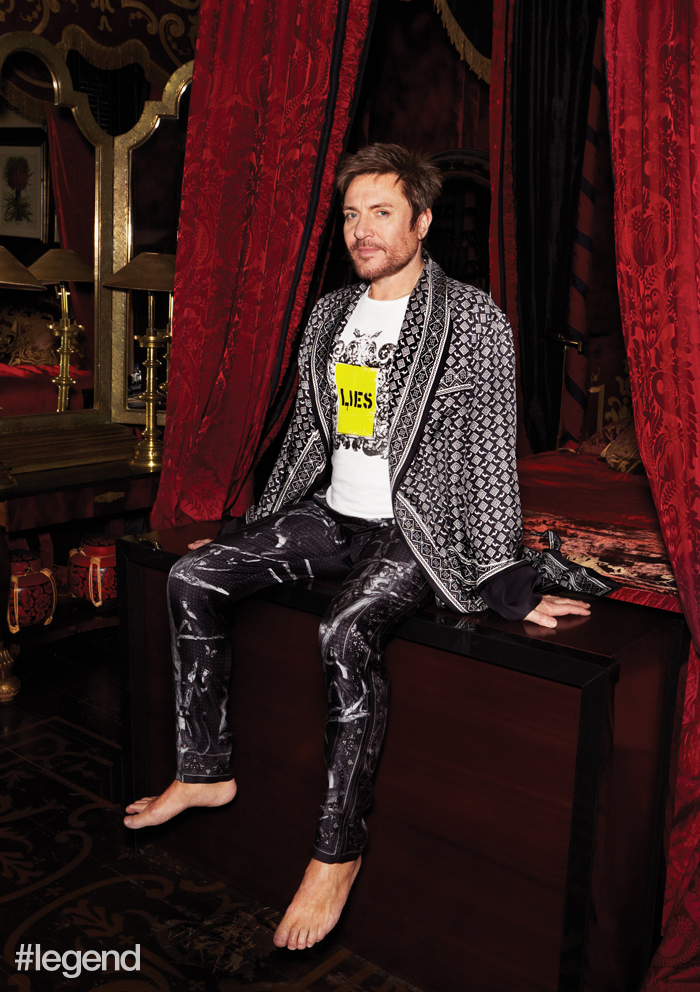
After nearly 40 years together as Duran Duran, how does it feel to go on the road?
Simon Le Bon: Is it that long? No, it’s more like 35. How does it feel? It feels as good as the music is, you know. We’re lucky that we’ve invested the time in making a new album that we really believe in, and that sounds good to our ears. That gives us a lot of confidence when we go on the road. It makes you feel like you’ve got something worthwhile to tour with, to give to people, and to base a show around.
It’s done pretty well, considering the age of the group that’s put it out there and how long we’ve been around. It’s not novelty value at all.
Duran Duran have always been early adopters, especially when it comes to video technology. What spurs this innovation?
SLB: I’m not a very technically minded person myself, but we’ve tried to use technology where we see the potential to do something new. In the same way as in the sixties and seventies you had bands like Pink Floyd that really made use of stereo. For us, video was our stereo. And we’ve tried to do things ever since then. I think we were the first purchasable downloads. We’ve always tried to use technology, because it can make you come over a little bit different to everybody else. Sometimes it doesn’t quite work, sometimes it does. We’ve generally found that the simpler ideas are the ones that tend to work best for live stage.
You guys appeared at the same time as MTV and, to an extent, you propelled each other’s rise. Do you think YouTube has that same capability?
SLB: It’s not the same. It has definitely given a lot of new artists a platform, but [YouTube] is not as different as MTV was when it came out. When MTV came out, there had been nothing like it. You just couldn’t see this stuff anywhere. Whereas what YouTube has done, it’s just kind of opened it up a bit more. It means that it’s a bit more democratic – that you don’t have to have the record company’s backing to make a video and get it seen. Anybody can put anything they want up there. Hence the amount of absolute crap that a lot of people spend their time watching. But that doesn’t mean that it’s all crap. There is some very good stuff there. Whereas somebody like myself, I spend hours and hours [searching] and find one good thing.
Do you think we’ll ever start seeing music videos on Periscope, or music trailers on Vine?
SLB: I think you do get to see those things, but I think it’s more consumer-led than artist-led. It’s how people choose to view their media. Clearly the biggest thing right now is YouTube, and until somebody comes up with a more convenient way to do things than YouTube, it will maintain that position.
Duran Duran paved the way for the modern music video: cinematic, big budgets, and exotic locations. What made you deviate from the bands-standing-around-playing-instruments norm of the time?
SLB: I think it goes back to what I was saying about that whole stereo thing. We realised that there was a medium which was undiscovered country. There was a lot of potential there that hadn’t been used. You’d had glimpses of it, with things like the Vienna video by Ultravox – which was actually what turned us on to Russell Mulcahy, by the way. He’s the director who had this amazing rise with us. Also, we came at a time of revolution in music. It was all about revolution really, ever since punk rock. Actually, I think rock and pop music had been about revolution ever since the 1950s, when it was the expression of teenage rebellion against parents and the older generation. I think things are very stable at the moment in music. It seems quite institutionalised, with the success of stuff like The Voice, The X Factor and Pop Idol. The scope for rebellion is really big now. There’s a lot for young people to kick against. I think we’re due for a big, big musical rebellion right now. And I’m looking forward to it. I won’t be part of it, but I’ll definitely watch it.
So we won’t be seeing you as a judge on The Voice anytime soon?
SLB: No, you won’t. My band would kill me. I mean, never say never, but I find it a little tiresome. I don’t want to be part of the establishment. It feels like giving in. I also think it chips away at your credibility with your fans and your ability to be free and honest. It’s a taint. It’s money. It’s tainted money and it’s not good for artists.

What motivates your creativity?
SLB: The idea that there is something to say, something about where you are in life –maybe it’s ego, I’m not sure – but this idea that you want to be part of what’s going on. You don’t want to just leave it to everybody else. To do that, you’ve got to find something worth saying. That’s the struggle, and that’s why we took two years to make our last album. We had to dig and dig and dig to find the good stuff and eventually we got to it. It took us a year to get there, and then another year to really mine it.
Yasmin, do you have a favourite Duran Duran song?
Yasmin Le Bon: I’ve got loads. I change them all the time as I go in and out of different phases. I rediscover. They have such a big back-catalogue. Of course, a lot of the ones I really love are never singles. I’m very lucky. I’m never alone: when I’m missing Simon, I’ve got his voice always.
You both travel so much and spend such long periods of time apart. Do you Skype a lot?
YLB: Actually, we never use Skype. I remember when they first had cameras on laptops and we tried it. Simon was determined and I kept saying to him: “I don’t think this is going to work. I’m not sure about this.” When you really are away from somebody, you have to protect yourself a little bit, distance yourself a tiny bit, kind of steel yourself for that time away. Otherwise you become very, very emotional. That may sound harsh, and I don’t mean that you don’t care about them, but you have to stop caring a little bit. I remember him being far, far away and he decided that he was going to put the camera on. He put the camera on – and burst into tears. And I said: “Right, that’s it. That’s exactly what I knew was going to happen.” It’s one thing hearing somebody on the phone, it’s quite another thing seeing them. So I’m not sure we’re going to go down that route again.
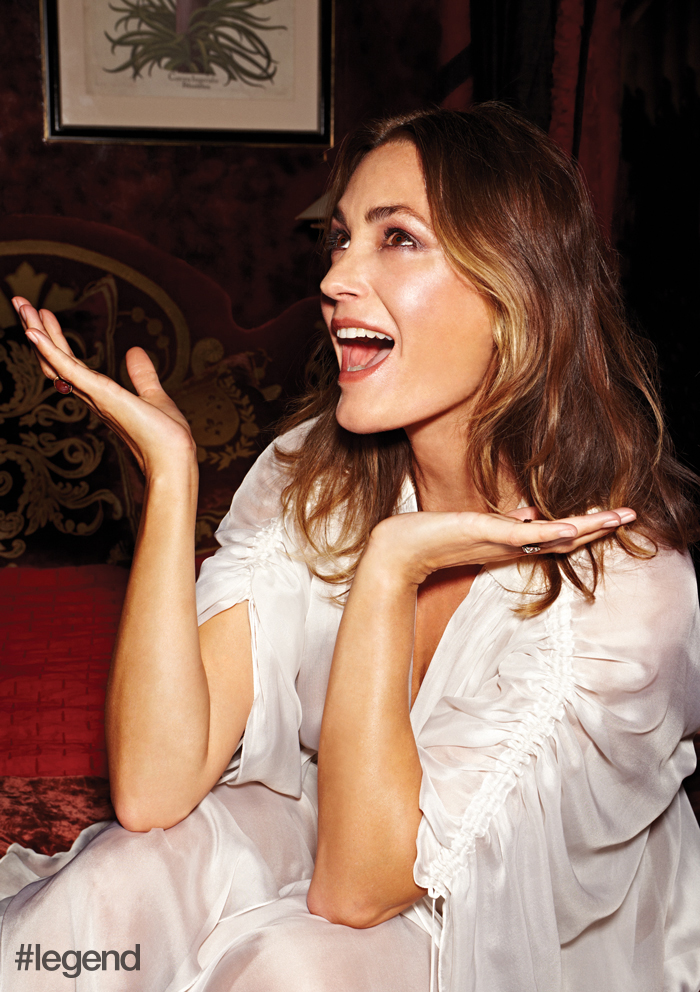
Simon, can you tell us about your ambassadorial work for Blue Marine Foundation?
SLB: Blue Marine Foundation exists solely to create marine-protected areas. By that, I mean areas of coastal waters where there is no commercial fishing in order to allow the sea life to recover. We’re becoming more and more aware now of how much the seas have been overfished. Have you ever had a holiday in the Mediterranean? The kids say they don’t want to go swimming because there are too many jellyfish in the water. That is a direct result of over-fishing, because a lot of the animals that feed on the jellyfish larvae, mainly tuna and turtles, have ended up on tables. The rate at which the seas are being cleared of life is unsustainable. We will end up with a jellyfish-infested toilet to swim in. I’m a sailor. I love the sea and I’ve been involved with boats and water since I was 11 years old. It’s very easy to forget what’s underneath when you’re sitting on top of it and looking at this beautiful shiny thing which reflects the sun and sky. But if you stick your head under, you realise very quickly that there is something wrong. A couple of years ago I went on a holiday around the Peloponnese and the whole place was dead. There was nothing bigger than my thumb swimming around, on top of dead coral and quite a lot of jellyfish. There’s something deeply, deeply wrong. In order to create a really healthy sea around this planet, the ultimate goal would be to protect 30 per cent of spawning waters. That will create a situation where there is enough fish for everybody, and will solve all the world’s sea problems. That’s what we’re looking at 20, 30 years down the line.
Yasmin, you’re also very involved with charity. Can you tell us about the race you did last year?
YLB: It was a charity challenge for Elephant Family, which is a fantastic charity started by a friend of mine, Mark Shand, who unfortunately died. He helped found this amazingly effective charity called Elephant Family, which is a little misleading because it’s not just about saving the elephants and making these elephant corridors in India. It’s really about protecting a whole way of life. I’d been involved with the charity for a while and they decided to have this challenge, Travels to My Elephant, with 35 tuk-tuk teams, travelling 500 km across India. We all knew what we were signed up to. I mean, you are in a tuk-tuk and it is India. And yes, I managed to have an accident on the very first day with my eldest daughter in the back. I broke my scapula and three ribs. But we were unbelievably lucky. It could have been ten times worse. The organisation took care of us really well. So we went home a little bit earlier than anticipated, and I still can’t put my hair up in a ponytail by myself, but I’m on the mend. Things happen in life, you can’t sit in a padded cell forever, can you?
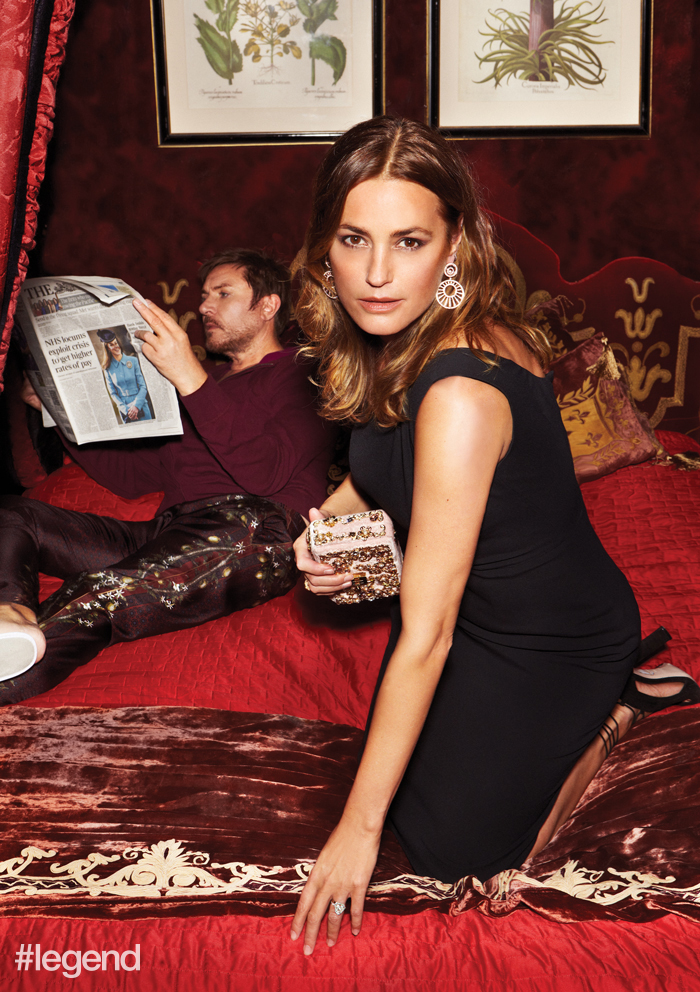
You seem to enjoy adventures. Didn’t you race with David Gandy as well?
YLB: The Mille Miglia in 2013, yes. It’s not actually a race because road races are illegal. It is a challenge with timed stages. They’ve added a day now, which probably makes it a much nicer event, because it was gruelling. You don’t sleep very much at all. We did it with Jaguar, and we did it in the most gorgeous race-prepared XK120. It was fantastic. We had a lot of fun.
Are you a bit of a petrol-head then?
YLB: I love classic cars. I love all good design, actually. It doesn’t matter to me. A lamp post that’s well designed speaks to me as much as anything else. For me, classic cars somehow evoke a different pace of life and a different appreciation of life. Not so fast. Not so throwaway. I like that. Maybe I’m a bit nostalgic.
What cars do you have?
YLB: I don’t. I have them all in my head, thank you very much, which means they’re fantastic on maintenance, servicing and storing. I buy a lot of magazines that I have to say the family are getting really sick of. I’ve become like the crazy old lady with magazines. I must get rid of them. You know what: I think there could be a classic car on the horizon this year – something small. We’ll see.
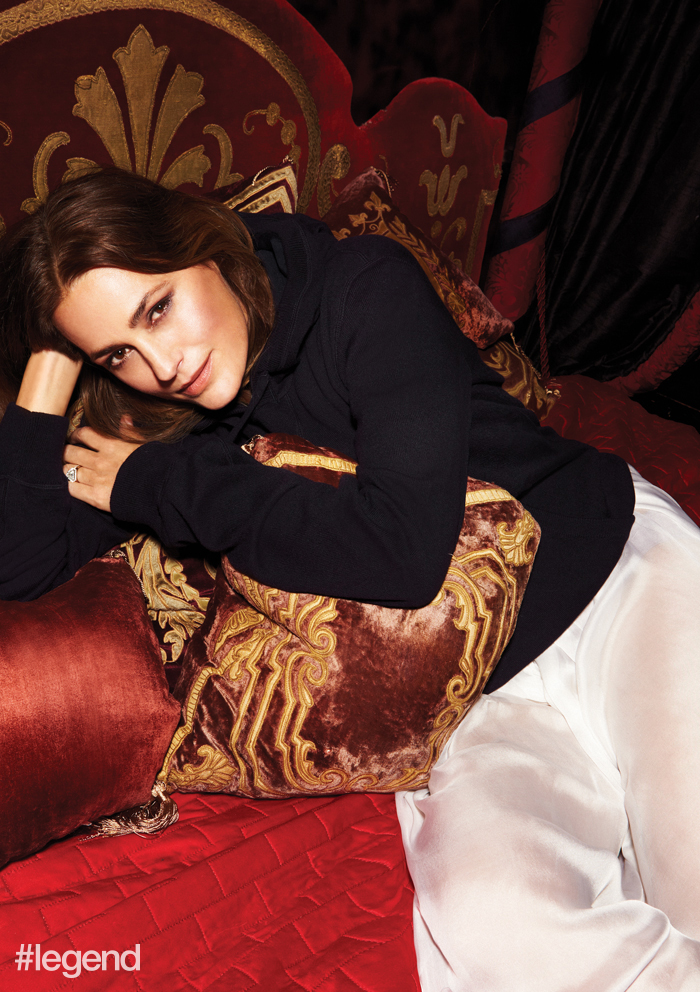
You’ve recently collaborated with London Heathrow on a book about travel and style. Can you tell us what’s in your carry-on?
YLB: Usually an enormous hardback book. I’m really not a Kindle person. I probably should get one, though, because I always seem to travel with the biggest book. Neal Stephenson, he just can’t write small books. So, good book, strong mints, lots of hand cream, credit card and my glasses – very simple. There’s usually a classic car magazine in there as well. Or a New Scientist magazine that I always think I’m going to read from cover to cover but halfway through I get really bored.
Speaking of reading, there is a section on the Duran Duran website called Simon’s Reader. How did that start?
SLB: I think I read some books and thought how I’d love to get my fans reading the same kind of stuff. So I did a book list of 10 and I put just three lines after each one. It was such a success that we started Simon’s Reader on the back of that. It’s not a book review site, it’s a book recommendation site. I don’t care whether a book is new or whether it’s a classic, or whether it’s a prizewinner or whether it’s unheard of. Fans like it for two reasons: because they get some good book recommendations and they can kind of get into my head a little bit and they like that personal aspect of it. I’m due to write [a post] this week, actually. I’ve just discovered a Chinese science fiction writer, who I believe is hugely popular in Asia. I don’t know how you pronounce it: Liu Cixin. His first novel was called The Three-Body Problem, and the second one is called The Dark Forest. It’s really great science fiction writing, very much from a Chinese point of view. I’ve done a little bit with audio books and it’s really got my ear attuned to Chinese names.
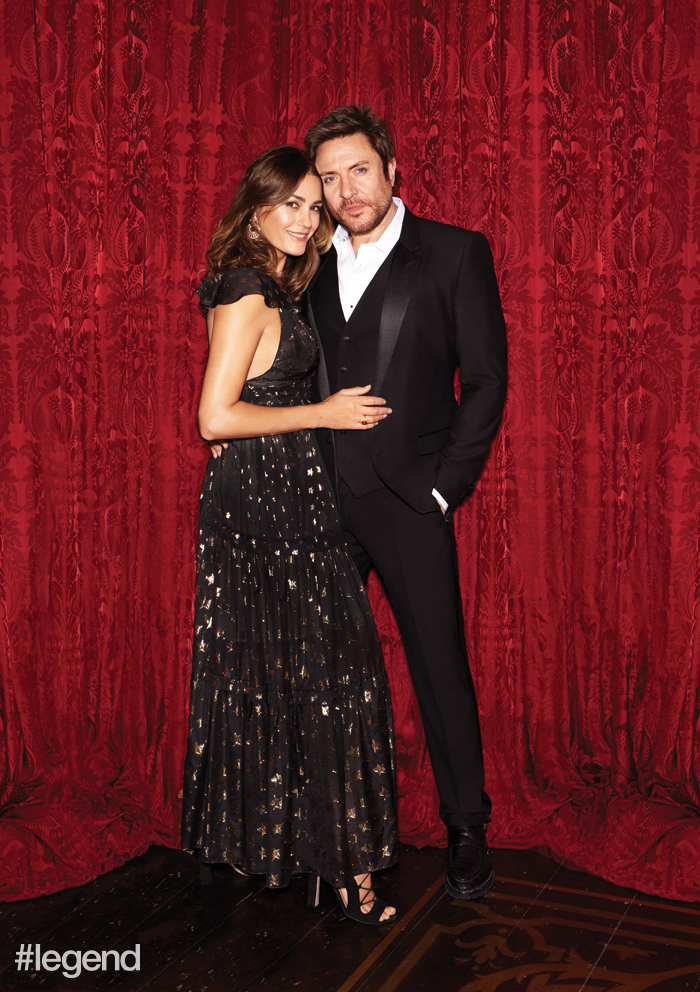
And are you a Kindle fan?
SLB: I prefer paper books because when you finish it, you can give it to someone. You can’t do that with a Kindle. Also, when you read a book that’s made out of paper, you leave a trail. You’ve got a thumbed page, a smudge on it, or a coffee ring. I think there’s something very human about it. I like books as things. I think they’re beautiful. You see this brick and you open it up, and it’s full of leaves and each one has so much on it.
Do you think you’ll ever write a book?
SLB: Maybe. I think it would probably be a slightly fictional account of my own life. It would be autobiographical fiction. How about that? Speculative autobiographical fiction.
On the subject of books and Kindles, there are certain parallels that could be drawn regarding records and MP3s. Do you think the way we listen to music nowadays has improved?
SLB: It depends what you think of as improved. Modern, high-definition music files, such as WAV files and AIFF files, are very high quality and they don’t scratch. They’re amazing. However, most people listen on MP3s, which are quite crap and there is a difference in sound. Then there is this whole thing about [vinyl] records having a certain sound of their own, which I think is very true. They’ve got a sound, and some people really like that sound. I grew up handling records and you develop a skill: how to hold it, how to put it on, how to put the needle on without scratching it – all that stuff. There is a resurging interest in records and I think it’s because of the elitism of it. It’s kind of cool to get a record out and maybe hear that little “krrr-krrr”.
What does the word ‘legend’ mean to you?
YLB: Legends are an idea, not a person.
SLB: I grew up as a massive, massive fan of David Bowie. Sadly, my legend died this year.
Photography / Robert Astley Sparke
Styling / Roberta Resta
Make-up / Liz Daxauer, Caren Agency London
Hair / Hamilton
Photography assistant / Hugo Knapp
Styling assistants / Carolina Cecchet and Yiting Zhang
Retouching / Eduardo Ardoneto
Location / Blakes Hotel


